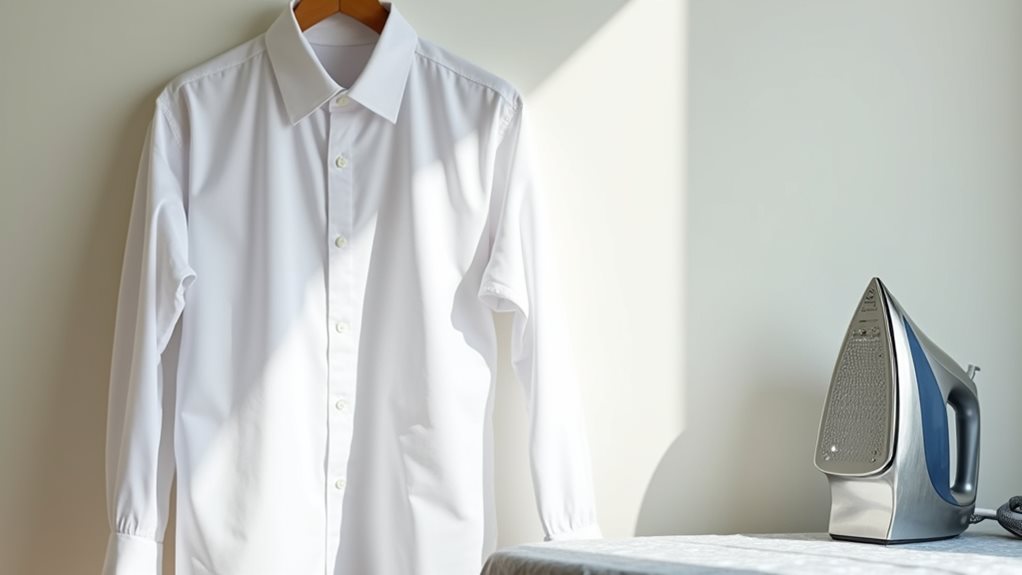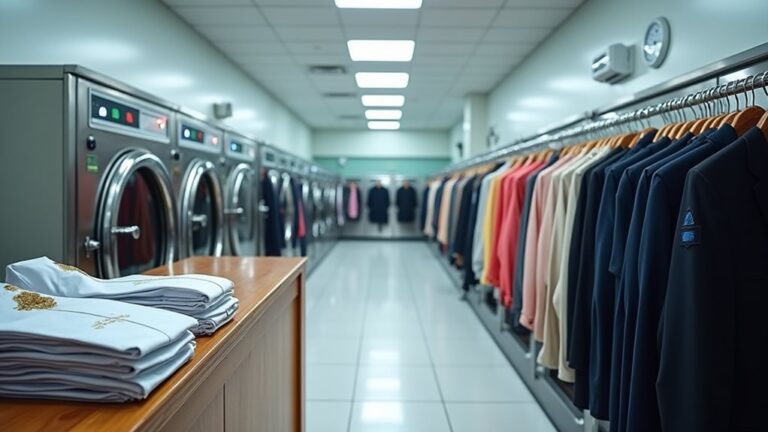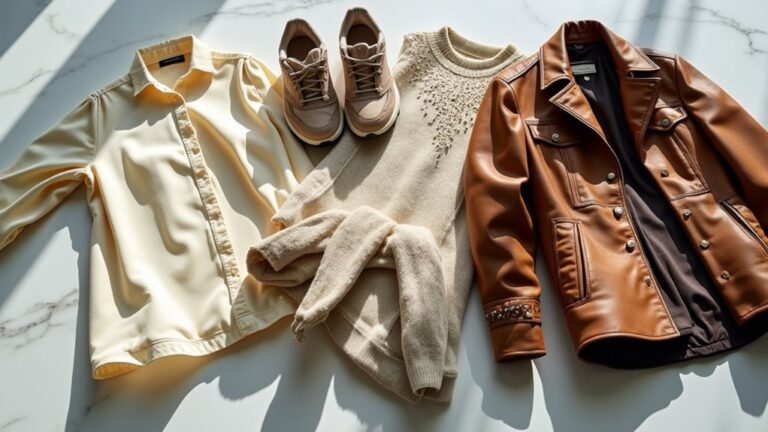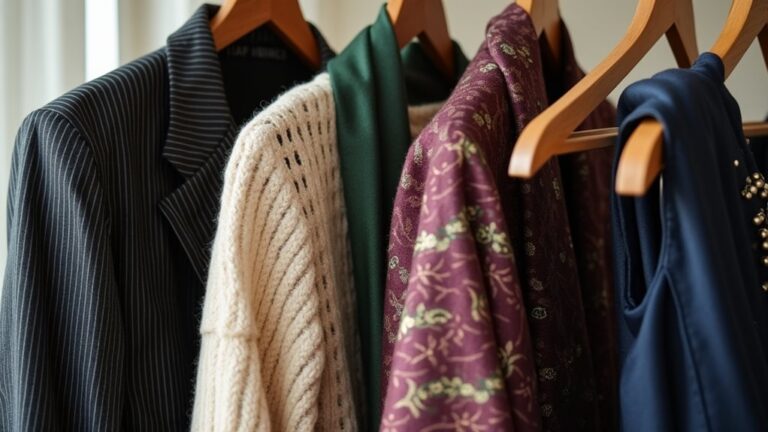You typically won’t need to iron after dry cleaning since professional pressing creates that crisp, polished finish we all love. However, I’ve learned that stubborn wrinkles can occasionally persist, especially on delicate fabrics like silk or garments with complex linings that seem to have minds of their own. When touch-ups are necessary, always use a pressing cloth and test on hidden areas first – trust me on this one! Proper storage immediately after pickup will keep your garments looking fresh, and there are gentle alternatives to explore.
Understanding the Dry Cleaning Process and Its Finishing Standards
When you drop off your favorite blazer at the dry cleaner, you’re fundamentally handing it over to a multi-step process that’s far more sophisticated than tossing clothes in your washing machine at home.
Dry cleaning transforms your garments through a sophisticated multi-step process that far exceeds simple home washing methods.
Professional dry cleaning facilities don’t just throw your garments into a machine and call it done – they actually inspect each piece for stains and damage before the cleaning process even begins.
The magic happens when specialized solvents, typically PERC, circulate through your clothes without water, followed by the essential pressing and finishing stage that transforms wrinkled fabric into crisp perfection.
However, here’s where it gets interesting: your fabric type and garment condition can influence whether you’ll need additional ironing later, which is why you should always inspect garments upon pickup.
This chemical solvent approach is particularly effective for oil-based stains that water simply cannot eliminate, making it the preferred method for structured garments and delicate fabrics.
When Additional Ironing May Be Necessary After Professional Cleaning

Despite the best efforts of professional dry cleaners, you’ll occasionally pick up your garments only to discover they still need a touch-up with your iron at home.
This happens more often than you’d think, especially with stubborn wrinkles that survived the cleaning process or delicate fabrics that require extra attention.
When ironing dry clean only clothes, you’ll want to use low heat and a pressing cloth to protect those precious fibers.
I’ve learned this lesson the hard way after accidentally scorching a silk blouse! 😅
Professional dry cleaners do their best, but sometimes lingering solvent odors or overlooked imperfections slip through their quality control.
Think of ironing as your final cleaning care step, guaranteeing your garments look absolutely perfect before you step out confidently.
Garments with complex linings or multiple fabric types are particularly prone to developing wrinkles during the dry cleaning process, making post-cleaning ironing more likely.
Safe Ironing Techniques for Previously Dry Cleaned Garments
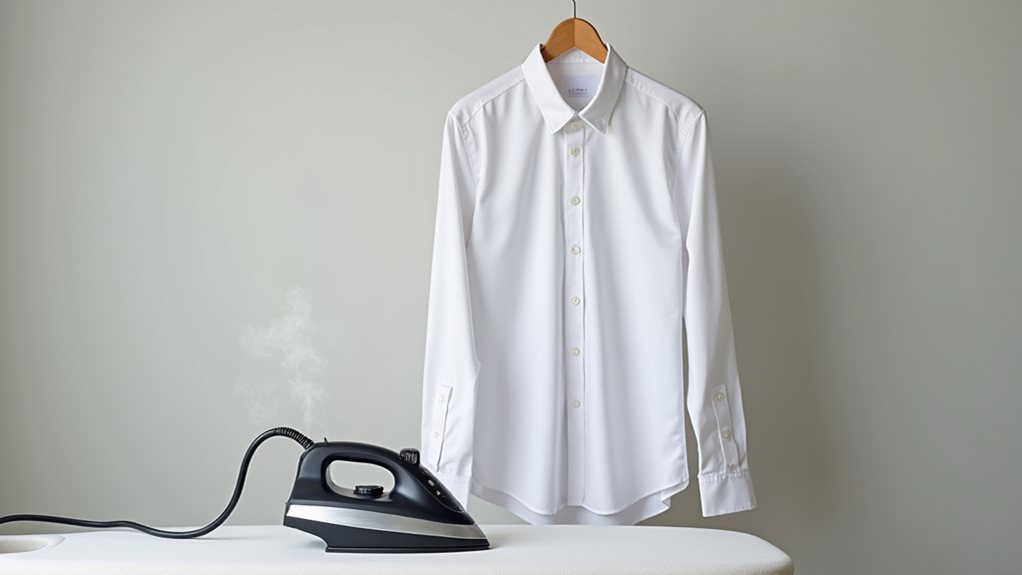
- Use a pressing cloth between iron and fabric to prevent shine marks.
- Iron garments inside out to protect the surface finish.
- Consider steaming as a gentle alternative for extra-delicate pieces.
A steam iron works better than dry heat because it helps relax fibers without causing damage.
This method will effectively remove wrinkles while preserving your garment’s professional finish.
Since dry cleaning solvents like perchloroethylene can leave fabrics more sensitive to heat, always test your iron on an inconspicuous area first.
Alternative Methods to Remove Wrinkles Without Heat
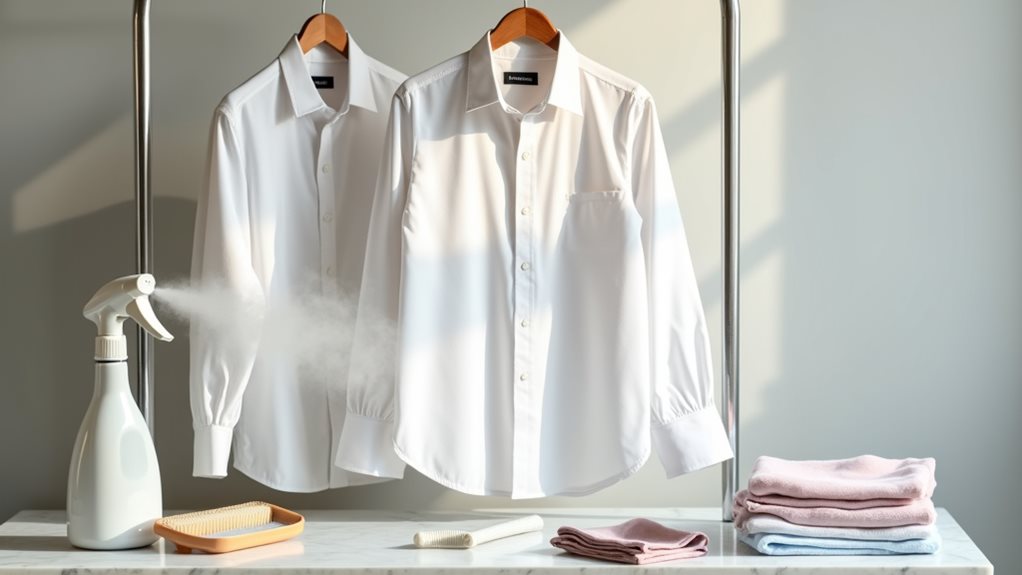
Why reach for the iron when gentler alternative methods can work just as effectively?
I’ve discovered that lightly spritzing wool or cashmere with water, then gliding away wrinkles by hand, works beautifully without any heat damage.
Your bathroom becomes a mini spa when you hang clothes there for twenty minutes – the steam naturally relaxes fibers and eliminates creases.
Commercial wrinkle-release sprays like Downy are lifesavers for quick touch-ups, especially on delicate items that make me nervous around hot irons.
A clothes steamer has become my go-to tool, gently coaxing stubborn wrinkles away without the stress of scorching expensive fabrics.
For truly precious garments, professional steam cleaning services offer peace of mind.
These gentle approaches are particularly important for items with intricate beading or embellishments that could be damaged by traditional ironing methods.
Proper Storage and Handling to Maintain Your Garments’ Appearance
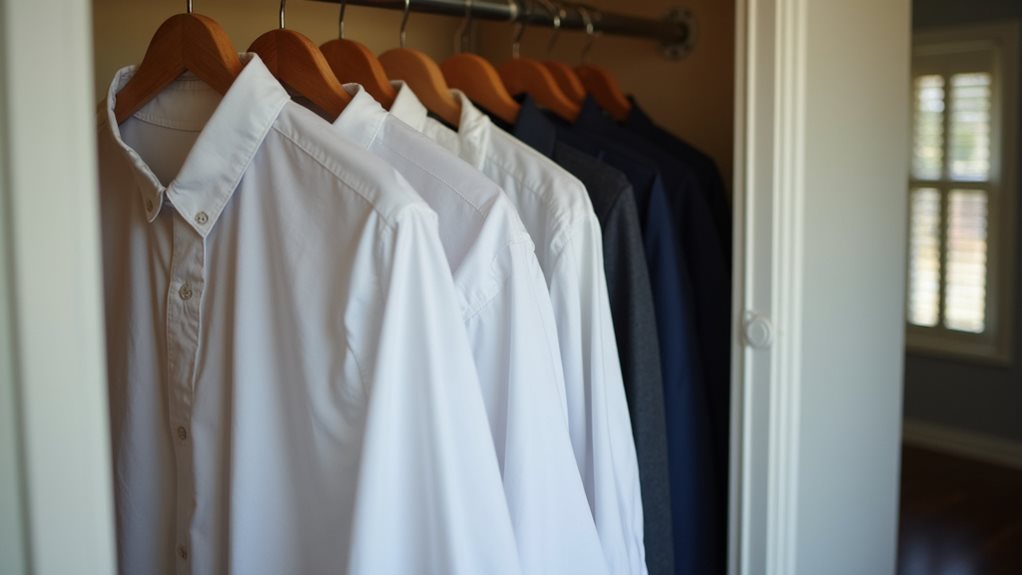
After watching countless beautiful garments lose their crisp elegance because I tossed them carelessly into my closet, I’ve learned that proper storage makes all the difference between looking polished and perpetually wrinkled.
Your clean garments deserve better than being crammed into overcrowded spaces where they’ll battle each other for breathing room.
Here’s how I’ve transformed my garment care routine:
- Hang immediately – Store garments right after dry cleaning to prevent wrinkles forming
- Use padded hangers – Protect delicate fabrics from shoulder marks and distortion
- Choose breathable garment bags – Shield embellished pieces from dust and snags
Keep everything in cool, dry spots away from direct sunlight, because high heat destroys fabric integrity faster than you’d imagine.
This gentle approach minimizes wear and tear while maintaining that fresh-from-the-cleaner appearance. Remember that certain fabrics like silk and wool require extra careful handling since they’re particularly susceptible to damage from improper storage conditions.

